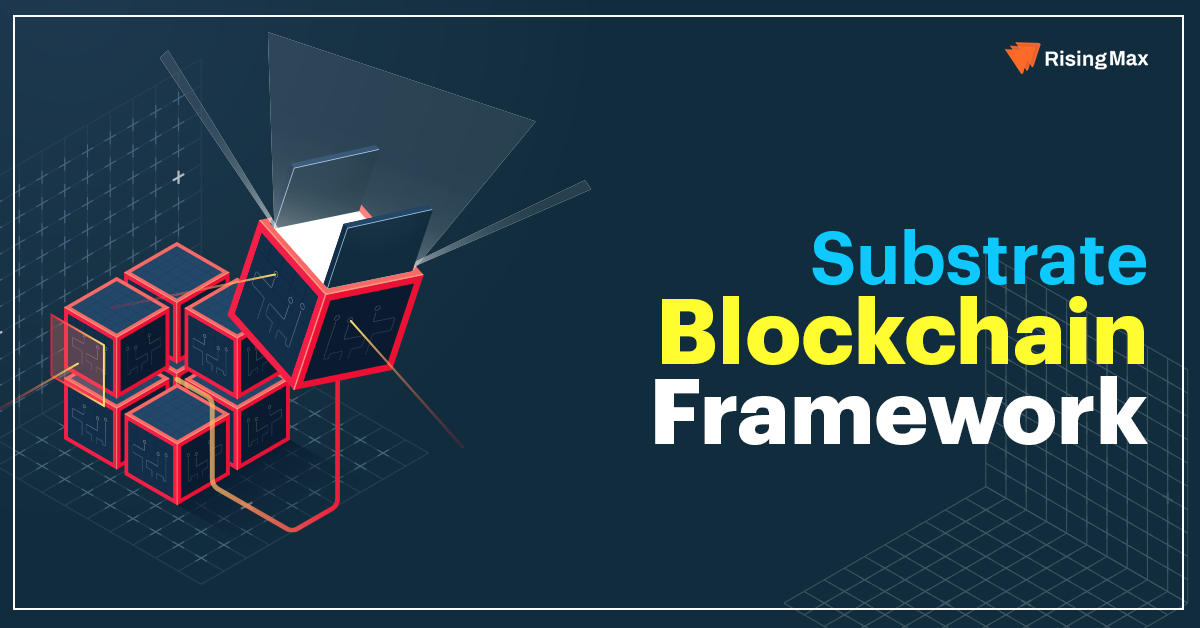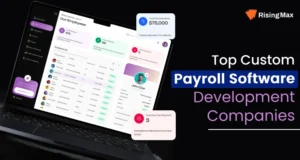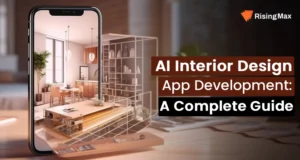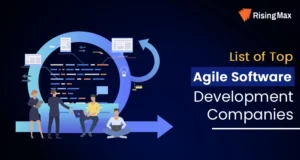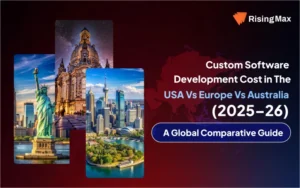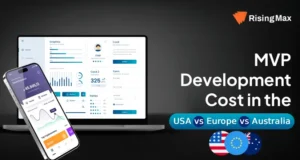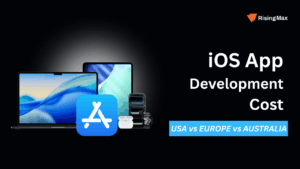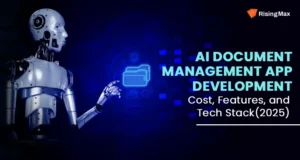As you may know or have thought, building a blockchain platform is difficult. It is rather sophisticated due to the execution of low-level network protocols and the creation of consensus code.

Introducing Parity Technologies’ Substrate. If you enjoy language, you might find it interesting that the Oxford Dictionary defines the word “substrate” as a material or layer that sits beneath something or on which a process takes place. You may construct anything with it. Software professionals ask, “Why not blockchains?”
A substrate blockchain framework is a collection of open, adaptable, interoperable, and future-proof libraries that includes value enhancements like networking, consensus, and cross-platform DB/file storage abstraction. Offering generic implementations of common algorithms enables developers to concentrate on the core of their work the business logic of the chain.
Let’s examine its advantages, framework, technology, and application by our team in more detail in this blog.
We know that your every minute is precious and this is going to take you 10-15 minutes to read the entire blog. Instead, save your time by clicking the box and getting complete information from our executive.Perfect Definition Of Substrate Blockchain
The Substrate blockchain framework is open-source, expandable, and adaptable for constructing numerous interconnected blockchain networks like Polkadot. It is a Software Development Kit made especially to offer developers access to every crucial component of the blockchain and enable them to focus on creating the logic that gives your chain its unique personality. The following characteristics set Substrate apart from all other distributed ledger platforms:
Easily Adaptable
Most blockchain networks include rigid, difficult-to-disconnect sub-systems that are tightly coupled. The blockchain system may be fundamentally weakened by non-obvious interconnections in chains created on forks of other blockchains.
The substrate is a fully modular blockchain framework that enables you to design a chain with clearly separated components by allowing you to select the network stack, consensus method, or governance strategy that works best for your project or by developing your components. Using Substrate, one may create a blockchain that is customized to their requirements and can expand as those needs evolve.
Open Source
The whole Substrate toolkit and architecture are distributed under an open-source license. The core components of the Substrate framework use open protocols like libp2p and JSON-RPC while allowing you complete flexibility to design your own architecture. The building community on Substrate is also substantial, supportive, and active, which benefits the ecosystem. More features become available for you to incorporate into your blockchain as the community expands.
Futuristic Technology Compliant
It was intended for the Substrate to be adaptable, modular, and upgradeable. The state transition logic for the Substrate blockchain runtime is a separate WebAssembly object. In some situations, your nodes may be granted permission to modify the Runtime itself, resulting in runtime updates across the network. As a result, “forkless” updates are possible since nodes often don’t need to do anything to use the updated Runtime. Your network’s runtime protocols may modify gradually or even drastically to accommodate user needs.
Interoperability
The majority of blockchain platforms only provide little interoperability with other blockchains. Communication across all Substrate-based Blockchains is made possible via Cross-Consensus Messaging (XCM). A para chain can be closely coupled to a substrate to create chains as independent networks while sharing the security of a blockchain.
Is Substrate Customizable
A blockchain framework is nothing like a sophisticated web framework if you’ve ever used one. Simply said, the scale is different regarding the breadth, number of moving elements, pertinent concepts, and extension points.
A fully-fledged game engine like Unreal, which offers a basic implementation for everything you’ll need and a lot of what you could require with extension points everywhere for you to tweak, would be a better comparison.
Naturally, this implies that some architectural decisions have been taken, which you won’t be able to reverse simply. You could want more customizability, which a framework might limit depending on your use case. That is the typical trade-off: using a blockchain framework will save you time, but there are some drawbacks you will have to accept.

Substrate Blockchain Framework Programming Language
RisingMax Inc. has been working as a blockchain development company for the last 6 years and has delivered more than 20+ blockchain development projects for the world's most renowned companies. Hire us to get the best possible blockchain solution. Benefits of Substrate Framework
The substrate framework is one of the best-created tools for developing the blockchain platform, ensuring the platform’s best possible security, reliability, and flexibility. The business on the blockchain platform already has experience in the platform’s reliability, quality assistance, and smooth running.
Here are some of the benefits to prove that substrate framework is the best option for developing a business platform. You can hire a blockchain development company for complete development and assistance to kickstart the business for full knowledge of the substrate framework.
- A blockchain framework’s substrate takes care of your labor-intensive tasks. The four essential parts—data layer, networking, transaction queue, and consensus—need not be a concern of yours. You may just utilize the default ones to get your new blockchain up and running at first. As you become more engaged, you may swap out components without worrying about how to implement them; simply choose a pallet that works for you.
- You have the option to create your own unique blocks or utilize pre-existing ones while building substrate. Although it is not required, building smart contracts is an option. You can design your own functions to ensure the security of your network instead of developing smart contracts. Of course, in that situation, it is entirely your obligation to perform the necessary tasks. However, you may always change them because of the chain upgrade system. As you are presumably aware, there is no simple method to undo the creation of a smart contract on Ethereum. They cannot be changed; a new smart contract must be deployed, effectively starting over.
- The substrate written in Rust is fantastic news for many developers. Rust’s coding style is comparable to JavaScript, although its logic is more like C++. Because of this, you can transition to Rust even if you just know JS. It is important to note that Rust could resemble C++, but only in positive ways. Due to the lack of a runtime or trash collector, Rust is speedy. But because of its type system and ownership model, it guards against memory mistakes at the beginning of compilation.
- Additionally, it has a sophisticated compiler with thorough error messages, package management, and build tools, just like current languages do. Rust is new, quicker, and more current. Therefore, it should be no surprise that it is one of the most in-demand languages.
Work Structure Of Substrate
Let’s obtain a high-level overview of the framework, its components, and the extension points we can utilize to build a unique blockchain now that we know what Substrate is.
A node is the fundamental component of this decentralized peer-to-peer system that we’re discussing. Our blockchain functions here.
The system’s fundamental building blocks, including peer-to-peer networking, blockchain storage, block processing, consensus logic, and external blockchain interaction capabilities, are all provided by this node, which is executed inside a client.
Options We Offer
Substrate Core
Substrate Core implies that we may construct our runtime any way we like as long as it targets WebAssembly and follows the guiding principles of Substrate’s block generation. We can then employ this runtime and use it inside the Substrate node.
This strategy undoubtedly involves the greatest effort and is the most challenging. However, it also offers the greatest technological flexibility and integrates into the Substrate environment without a hitch.
Speaking of the Substrate ecosystem, there is a thriving community of developers who use the platform for their projects and frequently give back by sharing their palettes.
Since Substrate pallets are essentially self-contained Rust libraries, you can integrate them into your Substrate project and customize them as necessary. You can find pallets by using a website like Substrate Marketplace or wherever Rust crates are hosted.
Like any other library, it is essential to audit the code before using it and to be aware of the tradeoffs between using external code and creating your own.
Following some experimentation with a ready-made node, we should concentrate on FRAME and learn how to construct a unique blockchain by building on top of the Substrate template node.
Substrate Frame
FRAME is a framework for creating a runtime for our blockchain from pre-existing libraries with great flexibility.
Since Substrate already has a prebuilt node template, we can add “pallets,” effectively library modules, to further personalize and expand our chain. We can also completely configure our blockchain’s logic, state, and data types at this level of abstraction. The majority of straightforward customization projects that aspire to be similar to Substrate definitely use this to combine technical independence with the simplicity of development.
From this point on, setting up our blockchain requires the least effort, allowing us to concentrate entirely on our own adaptations. However, if we want to go further, we may start from Core. We’ll still have to accept some defaults as they are, or rather, as they can be set.
Node
It offers the least technological freedom and the greatest prebuilt capabilities. It has default implementations for all essential parts, such as account management, privileged access, and consensus, and it is fully runnable. … and so on. The chain’s initial genesis block can be altered.
Here, we can launch the node and familiarise ourselves with the features that Substrate offers right out of the box by experimenting with the state and interacting with the live blockchain. Using the Substrate Playground, where you may examine both the backend and frontend templates, is another approach to accomplish the same goal.
But when we’re prepared to create our blockchain from scratch, it would be preferable to use FRAME, which is one level below.
Develop a business platform with the help of a substrate blockchain framework with the best and most dedicated developers. Fill out the form to schedule the meeting with our executive to get the blockchain-based application. Substrate Blockchain Development Concept
We’ll examine several fundamental ideas in Substrate to better understand the framework.
The trip starts at the runtime, the central component of your blockchain. Then, we’ll explore storage and arbitration, including where our blockchain is kept and how all nodes agree on which copy is true.
Extrinsic transactions and implementation of how to link with the blockchain, what such a connection looks like, and how it is becoming a part of the blockchain state will be briefly discussed before we wrap up our exploration.
Accounts and Consensus
Blockchain systems have the fundamental structure of agreeing on the right state because they are peer-to-peer and (often) comprised of several nodes without any hierarchy between them.
Depending on where you are in the network, the validity and sequence of these transactions may vary if numerous network members try to alter the state simultaneously (i.e., when you were notified of the changes).
This can lead to conflicts between different network parts that need to be resolved quickly and safely, so the network can continue functioning.
Blockchain systems use consensus engines precisely for this purpose. These engines implement rules that define how state transition needs to happen (guaranteeing that it’s deterministic) and how to resolve conflicts. This touches on block creation, finality, and fork choice/conflict resolution between competing states.
As a result, there may be conflicts between various network components that must be settled swiftly and safely for the network to continue operating.
Runtime
The project’s core is the runtime of your Substrate-based application. It includes information on the several states that can exist on the chain and the logic that controls how the blockchain transitions from one state to the next.
The runtime is sometimes referred to as the state transition function in Substrate. The entire blockchain may be thought of as a state machine. The runtime sets out the guidelines for transitioning between states. This implies that while creating your Substrate blockchain, the runtime is crucial and where you’ll spend the most of your effort.
Regarding custom runtimes, Substrate itself upholds the philosophy of attempting to be as open as possible. Beyond that, you have complete technical and creative freedom to implement things however you see fit. There are particular interfaces, though, with which any runtime must be compatible.
Transaction
There are extrinsic and intrinsic in a blockchain, or events that occur outside and inside the chain.
Extrinsic is required to interact with the blockchain’s state outside the blockchain, such as by adding new information or making changes.
Fortunately, Substrate provides the mechanism for carrying out this dance effectively, so we can rely on it for our extensions and make adjustments as necessary.
In general, the inner workings of Substrate and blockchains depend heavily on intrinsics, transactions, and the execution mechanism.

Conclusion
There seems still to be plenty to be done, and a project like a Substrate is never perfect or finished. But in the near and not-so-near future, we expect to see a tonne of interesting blockchain-related projects emerge, many of which will probably be built on, or at least inspired by, Substrate.
A substrate blockchain framework is the most demanded and reliable framework for the development of the blockchain. We at RisingMax Inc. have a 150+ core team of developers and designers with experience of more than half of a decade in blockchain development.
RisingMax Inc. is the leading blockchain development company working in the industry from the very initial stage when the blockchain was not so popular for business purposes. Hire us to develop the blockchain-based platform with the substrate blockchain framework.

